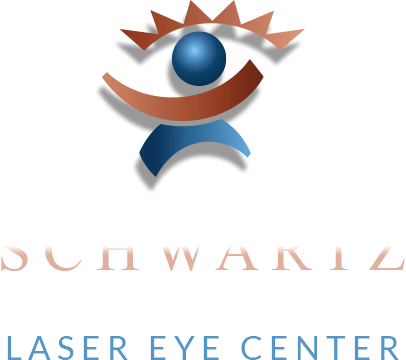PRK (Photorefractive Keratectomy) is very similar to LASIK except that Dr. Schwartz will not create a flap prior to performing the laser vision correction. A computerized excimer laser is used with both procedures to reshape the surface of the cornea, by removing a microscopic layer of corneal tissue.
In the LASIK procedure a flap is created by using an instrument called a Microkeratome ( an instrument with a small oscillating blade.) The flap is then lifted back, exposing the surface of the cornea, which is then treated with the excimer laser.
In PRK the epithelial layer (outer layer of the eye) is manually removed, thus exposing the underlying surface of the cornea. The excimer laser is used to reshape the cornea in a procedure that usually takes less than one minute. The epithelial layer will grow back over time without affecting the laser vision correction treatment. PRK allows Dr. Schwartz to be very accurate with little trauma to the eye and offers an alternative to those patients who may not be a candidate for the LASIK procedure.
For most patients having PRK, a protective contact lens is then placed on the eye. This lens allows the surface of the eye to heal over a period of a couple of days, and prevents most of the discomfort that might be associated with other procedures.
After the protective contact lens is removed, the vision continues to improve. Usually eye drops are used on a frequent basis to lubricate the eye, prevent infection and decrease any inflammation resulting from the surgery.
Why PRK over LASIK?
Dr. Schwartz may recommend PRK over the LASIK procedure if you have very thin corneas or other eye conditions requiring a less invasive procedure. PRK has been a very effective procedure when you are not a candidate for the LASIK procedure.
The healing time for PRK may be slightly longer than for the LASIK procedure; however, the outcomes are very similar. As with the LASIK procedure you will need to go home and sleep immediately following the procedure.



